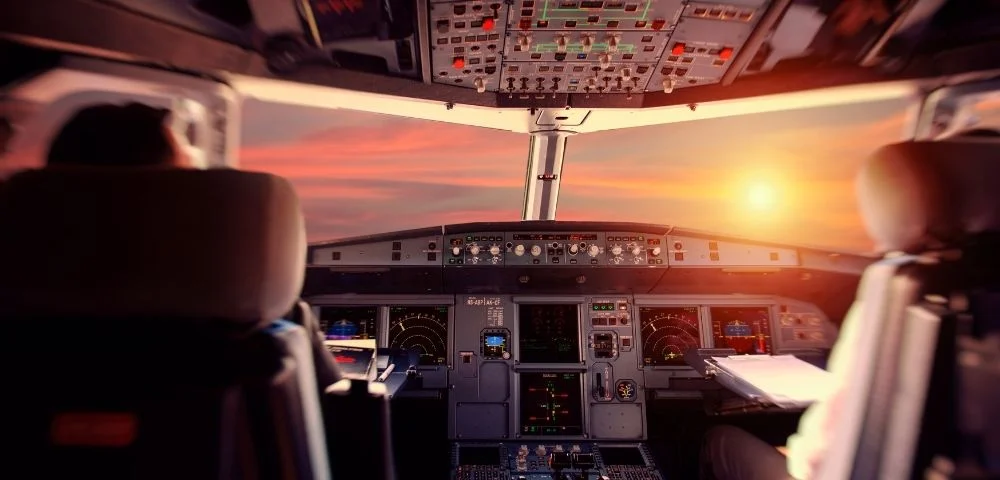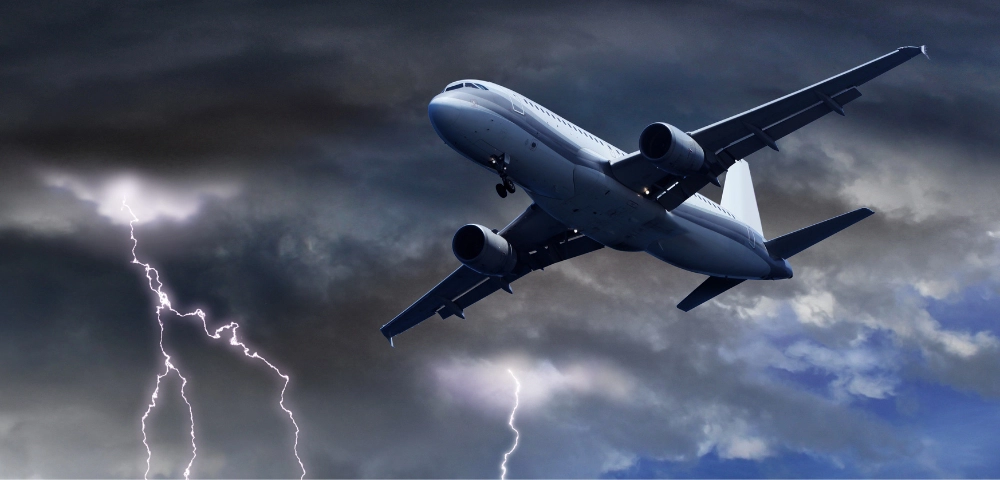
What is Turbulence?
The term turbulence refers to the irregularity in the flow of a moving stream. This irregularity is generally caused by sudden changes in pressure in the region, but it can also be triggered by factors such as changes in wind speed and direction, surface roughness, temperature differences, and jet streams. These changes cause air masses to mix and create turbulent regions. Turbulence experienced during flights is more common at high altitudes near the edges of jet streams or around obstacles near the surface and can cause aircraft to shake.
Types of Turbulence
Thermal / Convective Turbulence
Especially during summer and afternoon hours, the ground reaches its highest temperature of the day. If there is humidity in the region, the light humid air rises quickly. This rapidly rising air can cause turbulence in the air column in the region.
Orographic Turbulence
It occurs as a result of the wind changing direction and speed due to obstacles on the ground (mountains, buildings, trees, etc.). This type of turbulence is generally seen in areas close to the surface and its effect increases as the surface roughness increases. Therefore, the roughness of the region is taken into account when constructing airports.
Clear Air Turbulence (CAT)
It generally occurs in clear weather, especially at high altitudes where jet streams are present (around 200mb level). Jet streams are bands of rapidly moving winds in the upper layers of the atmosphere and are the main cause of seasonal weather patterns. The turbulence caused by wind shear at the edges of these streams, which can have speeds exceeding 120 km/h, can be quite severe.
Mountain Wave Turbulence
It forms due to the waves created when the wind passes over mountain ranges. These waves can create a turbulent region on the lee side of the mountain.
Wake Turbulence
It occurs due to the airflows left behind by aircraft. This type of turbulence, especially created behind large aircraft, can be dangerous for other aircraft during takeoff and landing. Apart from aircraft, wind turbines also create wake turbulence for the area behind them, which can negatively affect the energy production performance of other turbines.

The Impact of Climate Change on Turbulence
Climate change affects two of the types of turbulence mentioned above: thermal/convective turbulence and clear air turbulence. To understand the impact of climate change on turbulence, it is necessary first to understand the atmospheric events that cause turbulence. The formation of thermal/convective turbulence is due to the transport of hot and humid air from a specific region to the upper layers of the atmosphere. The increasing surface temperature due to climate change makes these transports more frequent and intense, directly affecting the frequency of thermal/convective turbulence. Clear air turbulence occurs due to wind shear at the edges of jet streams. With climate change, not all regions of the world warm at the same rate. The tropical regions, which are exposed to the sun more directly, warm more than the Arctic regions at higher latitudes. As a result of this difference, the jet streams, which speed up, can cause more frequent and severe clear air turbulence.
Climate Change-Induced Turbulence Increase Rates
Researchers at the University of Reading in the UK found that a doubling of CO2 concentrations in the atmosphere due to climate change could increase light turbulence by about 59%, moderate turbulence by 4%, and moderate-to-severe turbulence by 127%.
How Dangerous is Turbulence?
Although turbulence can be frightening during flight, it rarely poses serious dangers thanks to modern aircraft and trained pilots. Aircraft are designed to withstand the loads they may encounter during turbulence, making it almost impossible for an aircraft to crash due to turbulence. However, turbulence can result in injuries or even fatalities among passengers or cabin crew. Recent examples demonstrate the potential consequences if turbulence is not taken seriously:
- On May 21, 2024, a Singapore Airlines Boeing 777-300 on flight SQ321 from London to Singapore encountered turbulence, losing 54 meters of altitude within seconds, resulting in one death and 50 serious injuries. As of May 30, 2024, several of those seriously injured in the turbulence remain in intensive care.
- On May 24, 2024, a Turkish Airlines Airbus A320 on flight TK2320 from Istanbul to Izmir encountered turbulence, causing the plane to lose meters of altitude within seconds. A flight attendant hit the ceiling, breaking a bone in her back. She was hospitalized and treated after the plane landed.
In conclusion, while modern aircraft cannot be brought down by turbulence, it remains dangerous for passengers and cabin crew. Moreover, as turbulence negatively affects flight comfort, it can directly impact customer satisfaction for airlines.
Buluttan Weather Intelligence: It Can't Prevent Turbulence, But It Can Predict When and Where It Will Occur
Buluttan Weather Intelligence, powered by artificial intelligence and high-accuracy numerical weather forecasts, always protects your passengers and cabin crew from turbulence during flights. Our advanced technology offers hyper-local weather forecasts specifically designed for airports, enhancing safety at every stage of flight operations.
The risks posed by turbulence during flights threaten both passenger comfort and cabin crew safety. Buluttan Weather Intelligence's advanced weather forecasting algorithms allow pilots to avoid turbulent areas by detecting them in advance. This minimizes the effects of turbulence during flights and ensures the safety of passengers and cabin crew.
Hyper-local weather forecasts developed specifically for airports allow you to anticipate delays and cancellations in flights. These high-accuracy forecasts identify operational disruptions that sudden weather changes may cause in advance. They enable proactive measures against all negative conditions that may arise during takeoff and landing. For example, knowing the effects of weather conditions such as heavy rain, strong winds, or dense fog in advance allows airport management and airline companies to plan more effectively.






















